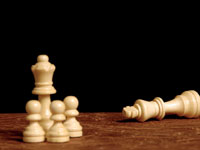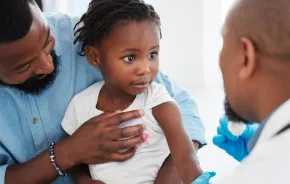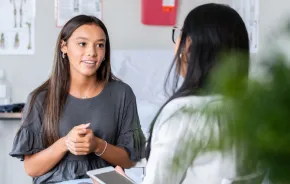Christopher Lee was just 5 years old the day his dad brought out a chess board and showed him the game. Soon after, Christopher joined his school’s chess club and, that same year, he placed ninth in the kindergarten division at the state elementary school chess championships, and first in his division at a local tournament.
Christopher is proud of his success, but that’s not the only benefit Christopher’s mom, Lynn, has noticed. Christopher is very competitive, Lynn says, but chess has taught him how to win — and more importantly, how to lose — with grace. He’s also learned how to abide by set rules, a struggle for many young kids. And chess has taught Christopher how to plan ahead and how to think through his decisions in a new way. His mom’s life has changed, too; next year she is going to be one of the coordinators for the chess club at his elementary school in Seattle, even though, she laughs, “I don’t really play.”
 Benefits of chess
Benefits of chess
As early as 1973, researchers began linking learning chess to gains in a child’s cognitive development, visual imagery, deduction, analytical ability, concentration, pattern recognition and other crucial skills. More recently, in a 1997 study of four elementary schools near Houston, Texas, researchers found significant, measurable increases in math and reading scores for third- to fifth-graders who were taught chess, versus a control group of children who didn’t play the game. More anecdotal reports indicate social benefits, as well. Aside from the game giving children exposure to kids from other schools and backgrounds, some expert chess players, such as Maurice Ashley, the first African American International Grandmaster, credit chess as a means of keeping kids from falling into the trap of gangs, drugs and violence, as it did for him when he discovered it as a seventh-grader in Brooklyn. In fact, many inner-city schools, including several in Harlem, have made national headlines as their chess teams have proven that chess is not just a game for the privileged few.
The youngest players
Despite the clear benefits of chess for older kids, however, there has been little or no research on the effects that chess playing has on kindergartners. In fact, even in local schools that have chess clubs, kindergarten-age children are not always included. Stacy Heilgeist, who ran the chess club at Whittier Elementary in Seattle for several years, thinks she knows why. Kindergarten chess is more challenging to teach, she says, and requires more parental involvement, because kids that age aren’t really interested in sitting quietly in a room, playing chess for an hour. Heilgeist’s solution? She created a more fun and casual atmosphere for kindergarten-age kids, such as having a huge chess board on the floor and letting the kids themselves be the pieces.
Lori Osseward agrees that teaching chess to younger kids requires more effort and creativity. But Osseward, who got involved when her kids started playing the game and now teaches chess at local public and private schools, thinks the extra effort is well worth it. In fact, kindergarten is her favorite school level, so much so that she has been dubbed by some “the queen of kindergarten chess.” Osseward has developed special techniques to make teaching chess to younger kids chess easier. Kids that age are more vocal and still love to make up stories, so Lori has the children imagine themselves as a chess piece and make up stories about each piece to explain why they move the way they do.
Despite the extra work involved, Lori says, even kids as young as 4 or 5 can easily be taught chess, and gain a lot from learning. Improved ability to focus, recognition of patterns, and engagement in rational thinking are all obvious gains, she says. But what is especially important is that the game helps young kids learn that their acts have consequences, a sophisticated concept many of their peers will not master for years.
Heilgeist, whose two kids learned at different ages, agrees. With chess, both of her boys gained the ability to win and lose gracefully and to learn from their mistakes. But the child who learned at age 5 seems to have a greater awareness of a “global perspective” and is better able to see the “big picture,” Heilgeist says, even in situations outside of chess.
Getting started
So how can you get your young child involved in chess? First, Osseward suggests, learn the game yourself so you can enjoy playing with your child. Second, dust off that chess board and have it out where it can be seen and played a little every day. And if you don’t have a nice chess set, consider getting one. Sets are available in everything from the Muppets to African American heritage to auto racing themes, many for less than $40. Third, if your child is in school already, check to see if there is a chess club and if it allows younger kids to play. Finally, take your child to some of the local places where chess is actively played, so you both can see how fun and rewarding chess can be, no matter what your age is!
Kathryn Russell Selk lives, works and writes in Seattle, where she is seriously considering getting out her chess board to play with her husband and her nearly 5-year-old son.
Resources
Books:
You don’t have to be a Grandmaster to teach your child — and yourself — how to play chess. Here’s a list of some useful books and resources:
Chess for Success by Maurice Ashley. Written by the first African American to become an International Grandmaster, this book is full of information about the benefits of chess playing for kids, including suggestions on how to keep girls involved.
Chess for Kids by Michael Basman. Using bright photos in the traditional Dorling Kindersley book style, this book takes you through each piece, even providing interesting historical notes for how certain chess pieces and moves have changed over the years.
Chess for Children: How to Play the World’s Most Popular Board Game by Murray Chandler and Helen Milligan. Cartoons throughout the book add a little fun to this informative book that will help you teach yourself chess.
Chess for Children by Ted Nottingham, Bob Wade and Al Lawrence. Recommended by Osseward, this book uses her favored technique of introducing one piece at a time and telling the child a story to help them internalize how the piece moves.
Alex and the Wednesday Chess Club by Janet Wong. Another Osseward recommendation, this is a fun picture book about a child who learns chess when he is 4 and how he handles the challenge of losing.
Web sites:
Washington Elementary Chess Champions — Web site of the state elementary school championships, with helpful links and information.
Cal Anderson Park Alliance — Seattle park with a weekly chess night.
Chess for Kids — a ThinkQuest Web site created by two young champions.
Northwest Chess — More local information on clubs, tournaments, and more.











